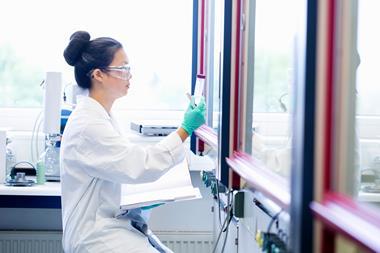Metal's unreactive electrons boost toxicity
Lead is one heavy metal. Implicated in the collapse of the Roman Empire, it can cause irreversible blood, brain, kidney, and liver damage. But why is it so toxic?
Using some elegant quantum chemistry and enzyme model compounds, Olivier Parisel and Christophe Gourlaouen of the Pierre and Marie Curie University, in Paris, France, now believe they have the answer. Their work could lead to better ways of flushing lead out of people’s bodies, they suggest.
Scientists already knew that lead poisons by displacing biologically-active metal cations, such as calcium and zinc, from their proteins. Calmodulin, for example, binds and transports four calcium cations, which regulate important cellular processes. Lead displaces one calcium cation, so reducing the enzyme’s efficiency. And lead totally inhibits the haem biosynthetic enzyme -aminolaevulinic acid dehydratase (-ALAD) when it displaces its single zinc cation, disrupting blood formation and leading to severe anaemia.
But Parisel and Gourlaouen have discovered that lead’s poisonous action is not just down to its ability to fit snugly into these proteins. Its toxicity, they say, is also due to the inert pair effect.
Although lead and carbon both lie in the same group of the periodic table, each having four electrons available to make bonds with other atoms, the heavy metal tends to use only two of them. A larger energy gap between lead’s outermost electrons means that two are more tightly bound to the much larger, and more positively charged, nucleus. So when lead bonds to other atoms, not only can this lone pair be left out, they can also get in the way. This can seriously distort the arrangement of atoms around lead; for an enzyme this is disastrous.
Seriously heavy
Parisel and Gourlaouen used model compounds to mimic calcium and zinc binding sites in calmodulin and ALAD. After adding lead cations to their models, they used quantum computations to track structural changes wrought by the heavy metal.
For the calmodulin model, no major distortions occurred, in line with observations that lead does not fully inhibit calmodulin’s activity. But for the ALAD model, lead induced strong distortions in the model related directly to the positioning of the lead’s lone pair of electrons. This could explain why lead inhibits ALAD activity, the scientists say.
Although tertraethyl lead has largely been phased out as a petrol additive, world production of lead and its compounds is increasing because of demand for batteries, glass, and electronic circuits that rely on the element. Yet current antidotes to lead poisoning use compounds that grab hold of a wide range of metal ions in the body, potentially causing damage by removing important metals besides lead.
’Our work suggests we could make more selective lead chelators,’ says Parisel. ’This might require bioengineering similar enzymes with extra lead coordination sites. Or we could use ligands from certain plants that are known to over-accumulate heavy metals.’
Lionel Milgrom
References
Angew. Chem. Int. Ed., 46, 553-556






No comments yet